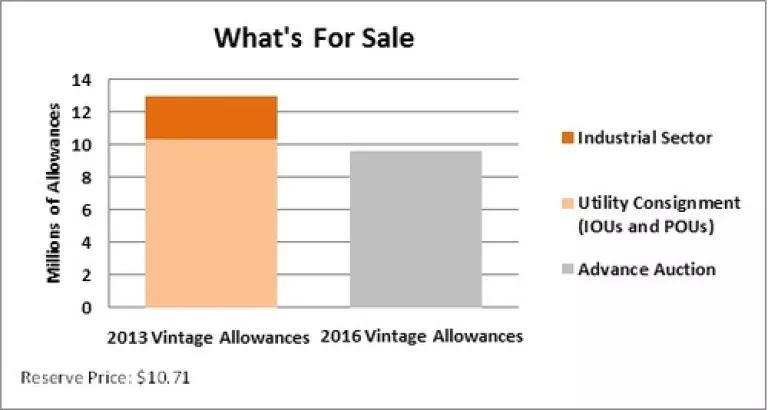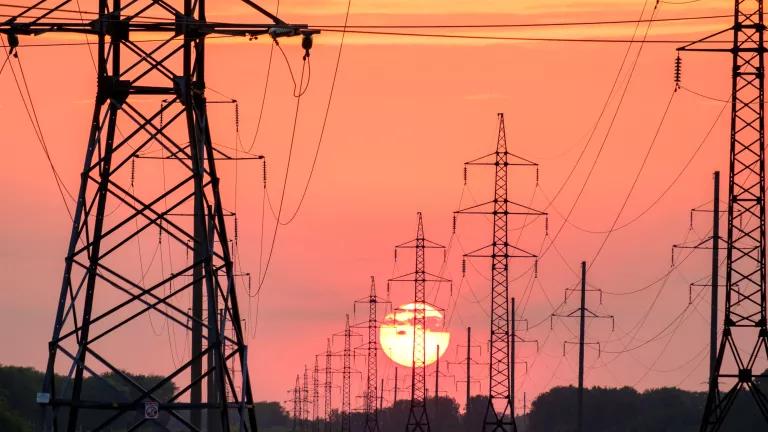While auctions tend to conjure up images of mile-a-minute auctioneers bandying rare goods to well-heeled patrons, don’t expect to see any Picassos on display next week when California holds its second auction of carbon pollution allowances in the world’s second-largest carbon market.
In a cap-and-trade program, auctions are a proven method of distributing the limited number of pollution permits (called “allowances”) in a fair and efficient manner, but they are not designed to generate much by way of fanfare (unless sealed-bid online submissions happen to be your thing). These auctions are simply part of implementing a key component of California’s law to reduce carbon pollution to 1990 levels by 2020 by requiring power plants, refineries and other facilities to acquire – either at auction or by trading amongst each other – a shrinking pool of allowances for every ton of pollution they emit.
So when the California Air Resources Board opens the bidding next Tuesday at 10 am PST, toast not to the winners but to another milestone reached on California’s comprehensive roadmap to curb climate change. The advantage of the cap is that it guarantees a steady decline in pollution levels, and lets the market figure out the price (not the other way around, like a carbon tax). As long as the emissions cap is enforced, the ups and downs of normal market activity have little bearing on environmental performance.
What’s Being Auctioned?
That said, here’s what to expect from next week’s auction (check back on Friday, February 22, for a rundown of the results once they are released):
Like the first auction in November 2012, two items will be offered for sale: a batch of ‘current vintage’ allowances, eligible for use starting this year, and a batch of ‘future’ year allowances, which can be banked for later use but may not be used for compliance until their vintage year (in this case, 2016). Fewer allowances will be available compared to the first auction – just under 13 million of the 2013 batch, and roughly 9.5 million of the 2016 batch. The minimum price rose to $10.71 per allowance, up from $10.00 last year.

Where Will the Auction Proceeds Go?
Auction proceeds from the utility sector must be used exclusively for the benefit of customers, with the lion’s share of the investor-owned utility proceeds set aside for all households served by PG&E, Southern California Edison, and SDG&E in the form of a climate dividend.
Proceeds from the remaining 2013 allowances and 2016 allowances will be deposited in the Greenhouse Gas Reduction Fund, subject to appropriation by the Legislature. Under a package of bills signed into law last September, the Air Resources Board will develop triennial investment plans with the Department of Finance to use auction revenue to keep California on track toward its long-term clean energy goals by reducing emissions and spurring growth across all sectors of the California economy, including the state’s most disadvantaged communities. ARB will hold the first of three public workshops on February 19 – the same date as the auction – in Fresno to present ideas and gather input from stakeholders on the first investment plan, which is due to Governor Brown in May.
Northeast and Mid-Atlantic States Step Up Their Game
Next week’s auction comes on the heels of a decision from the nine states participating in the Regional Greenhouse Gas Initiative (RGGI), a cap-and-trade program operating in the Northeast and Mid-Atlantic states to reduce the carbon pollution from power plants, to cut pollution limits nearly in half. Like California, RGGI employs an auction to distribute pollution allowances, which to date has driven more than $1.6 billion in economic growth and saved customers over a $1.1 billion on their energy bills from investments in clean energy and energy efficiency. The same opportunity is available here in California, which continues to set the pace in capturing the spoils of forward-looking clean energy policies.
We’ll have to wait and see what the auction brings, but one thing is clear: as of January 1, California’s largest emitters are on the hook for their carbon pollution, and the proceeds will go to households and clean energy. After the hottest year on record in the U.S., I’d say that’s pretty cool.



